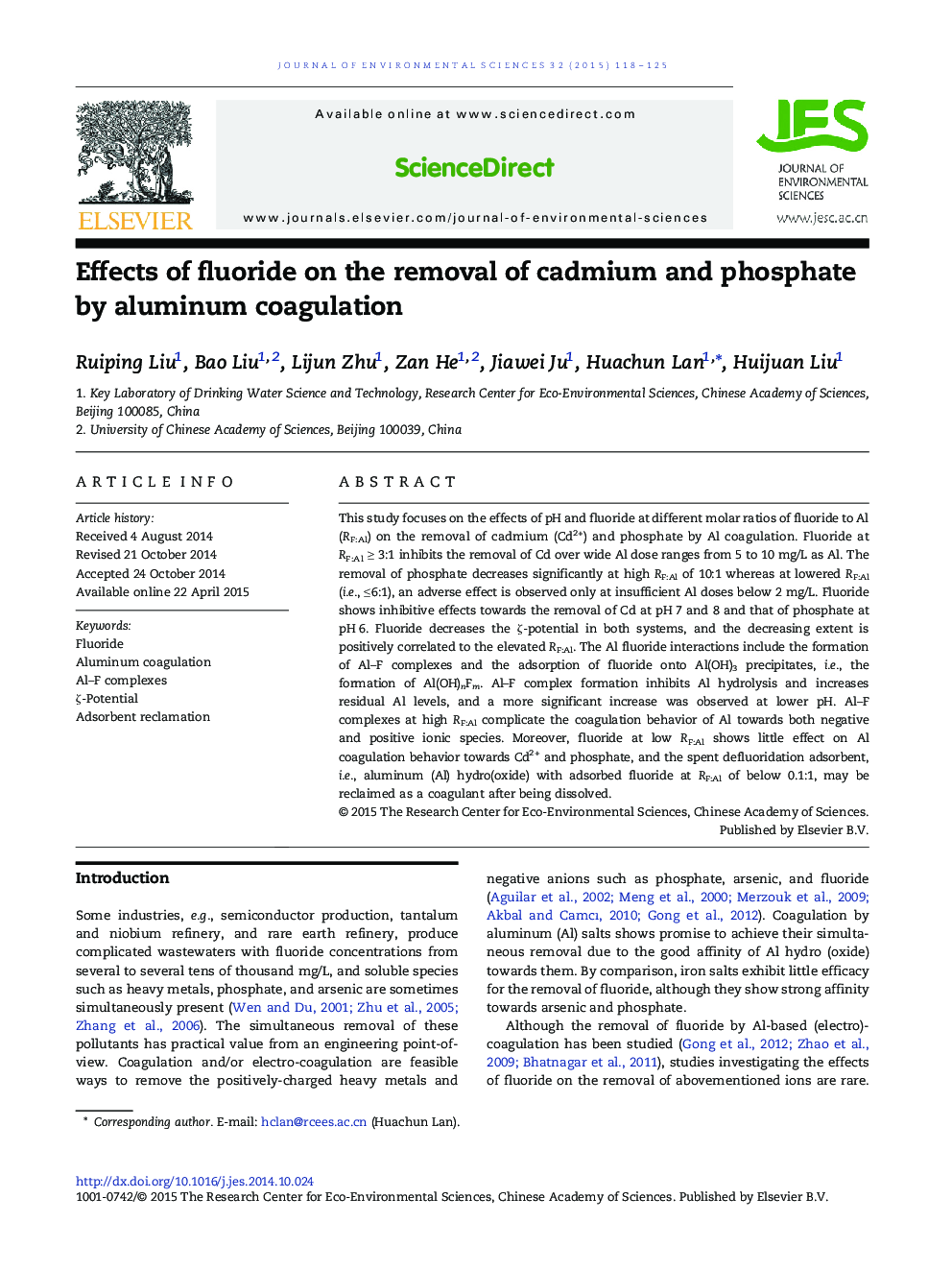| کد مقاله | کد نشریه | سال انتشار | مقاله انگلیسی | نسخه تمام متن |
|---|---|---|---|---|
| 4454049 | 1620821 | 2015 | 8 صفحه PDF | دانلود رایگان |
This study focuses on the effects of pH and fluoride at different molar ratios of fluoride to Al (RF:Al) on the removal of cadmium (Cd2+) and phosphate by Al coagulation. Fluoride at RF:Al ≥ 3:1 inhibits the removal of Cd over wide Al dose ranges from 5 to 10 mg/L as Al. The removal of phosphate decreases significantly at high RF:Al of 10:1 whereas at lowered RF:Al (i.e., ≤ 6:1), an adverse effect is observed only at insufficient Al doses below 2 mg/L. Fluoride shows inhibitive effects towards the removal of Cd at pH 7 and 8 and that of phosphate at pH 6. Fluoride decreases the ζ-potential in both systems, and the decreasing extent is positively correlated to the elevated RF:Al. The Al fluoride interactions include the formation of Al–F complexes and the adsorption of fluoride onto Al(OH)3 precipitates, i.e., the formation of Al(OH)nFm. Al–F complex formation inhibits Al hydrolysis and increases residual Al levels, and a more significant increase was observed at lower pH. Al–F complexes at high RF:Al complicate the coagulation behavior of Al towards both negative and positive ionic species. Moreover, fluoride at low RF:Al shows little effect on Al coagulation behavior towards Cd2 + and phosphate, and the spent defluoridation adsorbent, i.e., aluminum (Al) hydro(oxide) with adsorbed fluoride at RF:Al of below 0.1:1, may be reclaimed as a coagulant after being dissolved.
Figure optionsDownload as PowerPoint slide
Journal: Journal of Environmental Sciences - Volume 32, 1 June 2015, Pages 118–125
